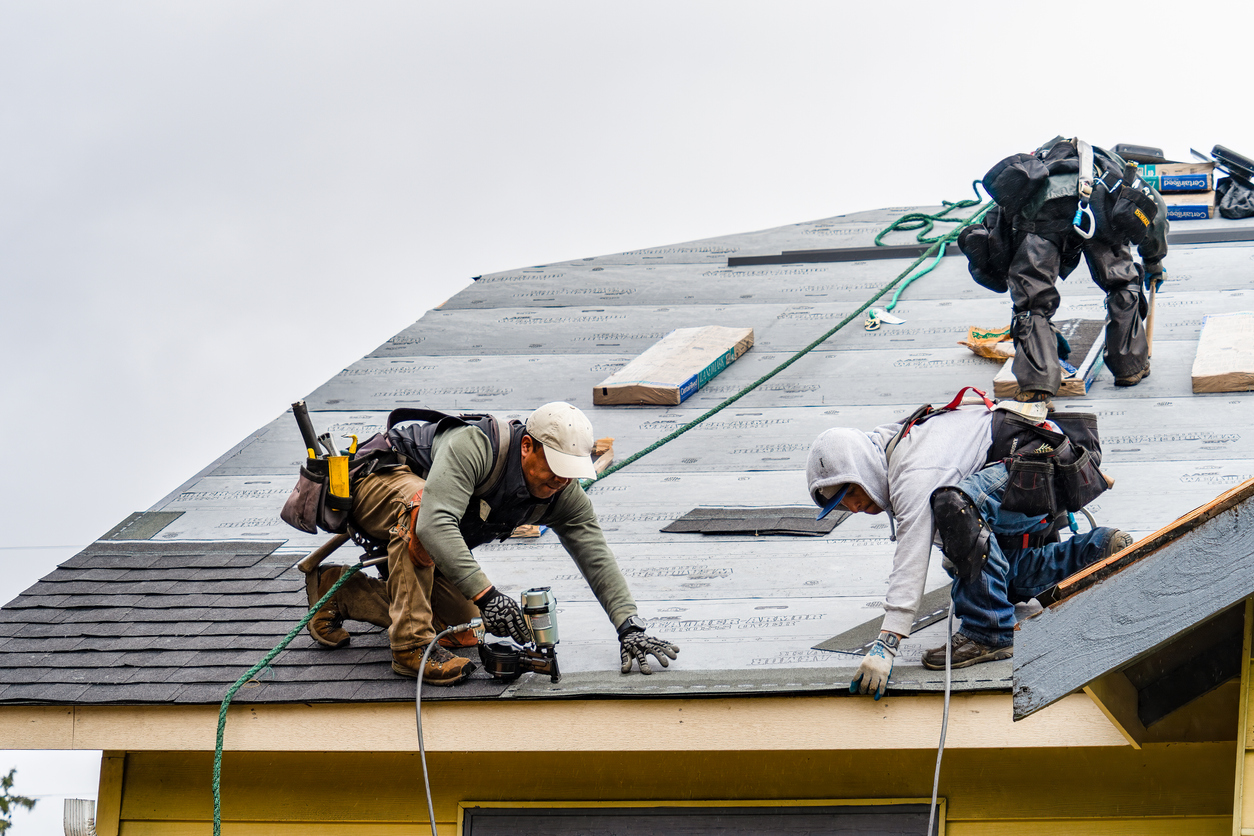Climate Change Alters the Real Estate Renovation M&A Landscape
Discretionary renovations are on the decline, but acquirers find M&A opportunity as climate change shifts renovation and repair activity

Macroeconomic forces have placed the real estate renovation and repair sector on a roller coaster ride in recent years.
Forced to stay home in the middle of the pandemic, consumers turned their attention (and wallets) to home improvement projects. The trend helped propel the real estate sector—including property acquisitions as well as repair and renovation businesses—to one of the most active M&A markets in 2021: The space saw $37 billion worth of private equity-backed buyouts, according to Dealogic data.
“Valuations at that time were stronger than we had ever seen in the lower middle market,” says Scott Mitchell, managing director at investment bank SDR Ventures. “There were just a lot of home renovations going on.”
Fast-forward to today, when inflation and rising interest rates have forced homeowners to put their DIY projects on hold. Meanwhile, in commercial real estate, office vacancies are reaching all-time highs, driving the sector into further distress. With dealmakers facing their own hurdles as the cost of capital climbs, the real estate renovation and repair market is not the alluring M&A target of yesteryear.
Yet experts who spoke with Middle Market Growth agree that pockets of the sector remain attractive for investors. One market force in particular—climate change—is opening doors for middle-market dealmakers to prop up M&A volume and make a positive impact in the process.
The Ice Is Thawing
Mitchell estimates that valuations in the home renovation and repair space have fallen by as much as 25% since 2021, but valuation multiples remain strong as interest rates stabilize and market uncertainty wanes. “The first half of the year was slow in terms of new lead activity,” he says. “But I’m starting to see the ice is thawing.”
In residential real estate, discretionary services like kitchen remodels or landscaping are tough markets to transact in. Hardware retailers are feeling this pinch, with Home Depot seeing its annual sales decline this year for the first time since 2009.
Mitchell adds that dealmakers have instead turned their attention toward non-discretionary pockets like restorations, as well as related categories like heating, ventilation and air conditioning (HVAC) and plumbing. Earlier this year, Ace Hardware acquired Indoor Comfort Holdings, a portfolio of 12 HVAC businesses, from private equity firm Grove Mountain Partners. Other recent deals include the acquisition of Seatown Electric, Plumbing, Heating and Air by Odyssey Investment Partners platform Service Champions, announced in June, and the acquisition of building restoration services provider Colorado Premier Restoration by AEA Investors’ BMS Cat. BMS provides restoration services for buildings damaged by fire, water and mold.
Elsewhere, some dealmakers also see emerging opportunities as a result of downward pressures on real estate builders and developers.
“In my mind, we’ve entered into a new cycle, which could include a distressed cycle,” says Chris Loeffler, CEO of alternative asset management firm Caliber, whose investment vehicles are primarily focused on middle-market real estate and private equity assets. “A lot of projects that are partially built or just coming to completion are going to find that their debt costs have doubled, and they’re going to have a hard time getting refinanced.”
A lot of projects that are partially built or just coming to completion are going to find that their debt costs have doubled, and they’re going to have a hard time getting refinanced.
Chris Loeffler
Caliber
Acquirers can step in and get those projects across the finish line with fresh funding at an attractive purchase price, he adds.
When it comes to strategics, Mitchell says he hasn’t seen much competition from these players. But for some corporate acquirers, favorable sale prices and less interest (and therefore competition) from PE firms can be strong motivators for M&A activity.
For presale home renovation company Revive Real Estate, M&A isn’t necessarily a major part of its growth strategy. Even so, the company acquired HomePrep, another presale home renovation business in February to expand to the East Coast. According to Revive CEO and founder Michael Alladawi, the merger also allows Revive to test some of its new technologies with HomePrep’s network of contractors. HomePrep founder Josh Snyder was also a big part of the appeal due to his understanding of the nuances and challenges of this space. “We needed someone that was invested in the company’s vision,” Alladawi says, adding that the deal “was a pretty organic acquisition. This was kind of an acqui-hire play.”
The Impact of Climate Change
As acquirers explore different investment niches with varying motivations, many are finding that climate change is unlocking doors for future deals.
“We’ve seen a really big uptick in the restoration space related to severe weather,” says SDR Ventures’ Mitchell. “We’re seeing buyers move toward those types of opportunities, because it seems like severe weather events are causing more opportunities to provide those types of services.”
He adds that in Colorado, where SDR Ventures is based, roofing businesses are performing especially well as damaging hailstorms grow more frequent. (In June, a hailstorm forced the cancellation of a concert at the Red Rocks amphitheaters.)
Listen: A Conversation With Revive’s Michael Alladawi
Alladawi similarly saw firsthand the impact of climate change on the industry—and how it’s compounding the current labor shortage. Revive was in Texas in 2021 during an historic freeze, which caused widespread damage to buildings and drove up demand for repair services.
“We were trying to roll out there, and we had to call hundreds of contractors to find someone willing to take on our projects,” he says. “For every 10 professional skilled laborers, electricians, plumbers and framers that are leaving the industry, only one is coming in.” The company’s acquisition of HomePrep expanded its network of contractors, now a valuable and increasingly scarce resource.
Reducing Buildings’ Carbon Footprint
While M&A activity in response to the consequences of climate change is likely to pick up, dealmakers also can also play a role in combating it.
Loeffler points to attractive investments in technologies and services that track and reduce greenhouse gas emissions from residential and commercial buildings, which account for an estimated 40% of global carbon emissions. The price of implementing such solutions has come down significantly in recent years, providing a financial incentive for real estate owners and managers struggling with higher debt costs, he adds.
In Europe, where temperatures are rising at twice the pace of other continents, recent M&A activity in this niche includes the acquisition of Kiona, which provides contractors with technology to make residential and commercial buildings more energy efficient and lessen their carbon footprints. Energy efficiency solutions provider CAREL acquired the business from its previous owner, investment firm Summa Equity.
In the U.S., with office buildings hitting a 17.1% vacancy rate in June, some see the trend of converting these structures into residential buildings—a shift supported by several state-level tax incentive programs—as another driver of future M&A. Experts say this renovation activity supports sustainability initiatives, allowing developers and owners to retrofit structures with “green” technologies during construction.
“There’s going to be some opportunity from an adaptive reuse standpoint,” notes Loeffler. “That’s really great, because if you think about it from an environmental perspective, you’re using an existing building. Rather than knocking it down, you can turn it into a mixed-use development.”
Carolyn Vallejo is Middle Market Growth‘s Digital Editor.
Middle Market Growth is produced by the Association for Corporate Growth. To learn more about the organization and how to become a member, visit www.acg.org.


